Mobile App Usage Statistics 2018
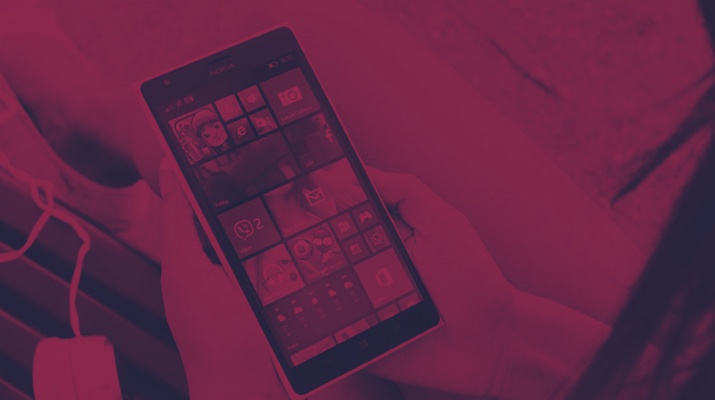
Mobile App Usage Statistics 2018
Consumers use mobile apps every day to connect with friends, order food, send money, and play games. It’s important for businesses to understand what consumers do and do not prefer in order to create a successful app. Our survey analyzes the dominance of social media and gaming apps, why millennials more honestly report their app usage, and how phones’ storage space affects mobile apps.
In early 2017, mobile apps accounted for nearly half of global internet traffic and will continue to rapidly grow.
Mobile apps are an important channel to consider for businesses seeking to better communicate with customers. But how exactly do people use mobile apps?
The Manifest conducted a survey of 511 smartphone owners who use at least three apps daily. Our first report on the survey focused on social media apps.
Now, we analyze how often people use apps, which types of apps they use most frequently, and why they delete apps.
This data offers insight into why people might underreport the frequency they use apps and what drives people to open or delete an app. Businesses can use this data to create a more targeted mobile app for their customers.
Our Findings
- Social media apps dominate the most frequently used apps (39%), while gaming and communication/messaging apps tie for second (10%).
- The largest percentage of respondents (32%) say they open any kind of app on their phone only 1-10 times per day total, but they are likely underreporting their behavior.
- However, over one-fifth of millennials (21%) say they open any app more than 50 times a day, compared to only 2% of baby boomers.
- Over half of respondents (51%) deleted an app only 1 week ago or less.
- A full quarter of respondents (25%) say they deleted an app simply because their phone’s storage space was full and they needed space.
Social Media Apps Dominate Usage
Given their popularity and addictive nature, it isn’t surprising that social media apps ranked first among respondents’ most frequently used apps.
Nearly 40% of smartphone owners listed social media apps as their most frequently used type of app.
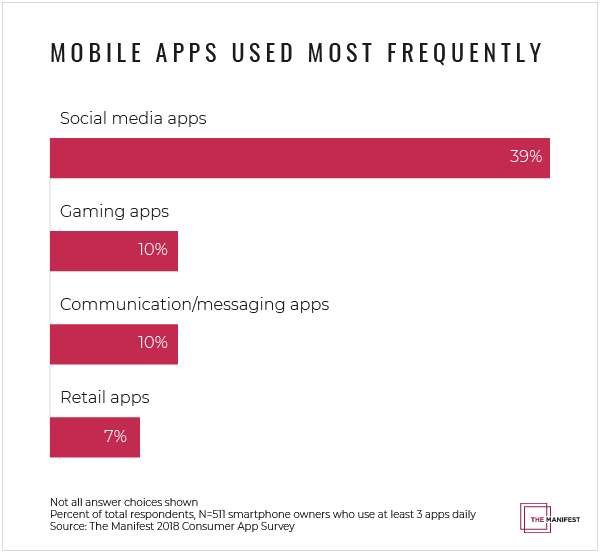
Both gaming and communication/messaging apps tie for second, at 10% each.
Communication and messaging apps, like Apple’s Messages, WhatsApp, and Gmail, are now often viewed as a required tool, not a luxury, which could explain their second-place finish. But what about gaming apps, such as Candy Crush, Fruit Ninja, and others? Why do so many consumers use these types of apps?
Alex Levin, co-founder of L+R, a Brooklyn-based creative agency, wasn’t surprised at gaming apps' relative popularity.
“Ultimately, I think people are excited to use gaming apps because it helps them pass the time,” Levin said.
Levin said that gaming apps may not connect people or help them see beautiful photos like in other apps – but that’s not always what people need. They often just need a distraction or an alternative, more pleasurable way to activate their mind.
Glu Mobile, one of the most successful mobile game developers, offers recommendations on how companies can make a successful gaming app:
- Frequently update the game. Updates offer compelling reasons for users to keep logging in to see what’s new.
- Include socially competitive features that offer the ability to compete against others. People enjoy competing against both strangers and friends.
- Be “new” but also recognizable and understandable. Use existing trends to create something unique.
- Seek to fall into the “moneyball” categories. Several genres are more popular, including shooting, racing/sports, celebrity, and simulation games.
For example, Glu Mobile’s wildly successful game, Kim Kardashian: Hollywood, leverages a well-known brand and falls into the "moneyball" category of celebrity games. The game uses Kim Kardashian's significant stardom and a compelling user experience to create something unique and incredibly addicting.
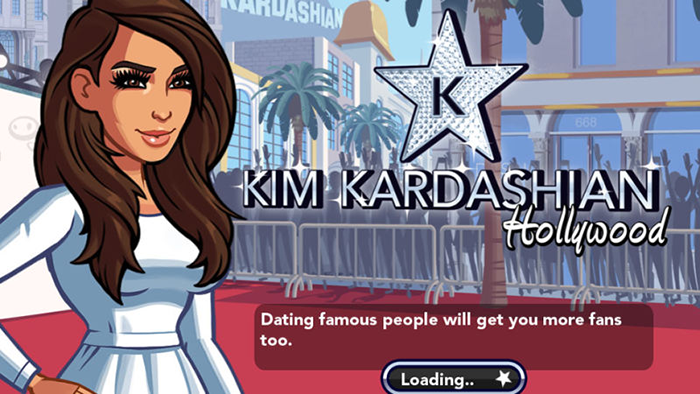
Similar to social media apps, gaming apps offer users an escape, which is appealing and addicting.
Businesses can learn from both social media and gaming apps if they are seeking to increase the usage of their own app.
People Underreport Their App Usage
Apps users potentially underreport how often they check apps.
The largest percentage of respondents (32%) say they check mobile apps on their phone 1 to 10 times a day.
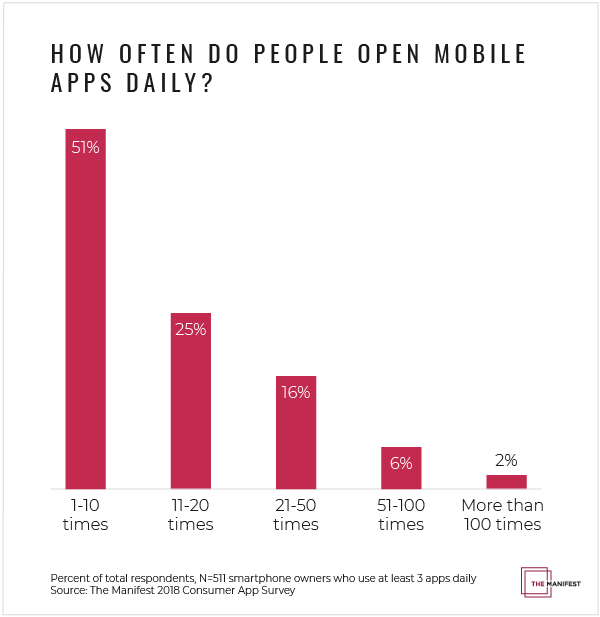
This number, however, is likely higher because people often struggle with estimating their own behavior, especially when it comes to mobile app usage.
“There tend to be large differences between ‘self-reported’ estimates of behavior and actual measures of behavior,” said Dr. Sheana Ahlqvist, lead UX researcher at PhD Insights, a user research agency.
There tend to be large differences between ‘self-reported’ estimates of behavior and actual measures of behavior.
Respondents are likely checking their apps much more often. For example, data shows that in 2016, the average smartphone user was on his or her phone more than 4 hours a day, with over 90% of that spent in apps.
Dr. Andrew Selepak, director of the master’s degree in social media program at the University of Florida, discussed how people may not realize how often they use their phones.
“I know, personally, I get up in the morning, and I grab my phone and see all of the notifications that came in,” he said. “I probably have a text message, a Snapchat message, a Facebook like and an Instagram like. I've got push notifications from the Washington Post. I've got Gmail emails. All of these notifications are waiting for me, and I go through all of them before I start my day.”
Before getting out of bed, you may check dozens of apps. All these push notifications direct you into apps, often without conscious choice.

Finally, the semantics of “opening an app” may have confused respondents answering the survey.
Levin explained how it can be hard for respondents to think about how many times they individually “open” an app: “Launching an app from the home screen, navigating from a notification, or clicking a deep link from an email, tweet, or text can all be considered opening an app. We end up using apps a lot more frequently than we realize."
Although respondents potentially pick up their phones only 1 to 10 times a day, they are most likely opening multiple apps within a single mobile usage session.
Millennials Open Apps More – Or At Least Recognize They Do
Millennials use mobile apps more than other generations – and they are potentially less ashamed of admitting their addiction.
One in five millennial app users (21%) say they open any app more than 50 times a day, compared to only 2% of baby boomers.
| Daily App Opens? | Millennials | Generation X | Baby Boomers and Older |
|---|---|---|---|
| 1-20 times | 49% | 63% | 84% |
| 21-50 times | 30% | 28% | 14% |
| More than 50 times | 21% | 10% | 2% |
Millennials, who grew up in a more technologically driven world, likely use apps more than older generations.
“My parents are more likely to call me if they need to contact me,” Dr. Selepak said. “I think a lot of my other [millennial] friends forget that their phone makes phone calls. They'll want to video chat or send a message through Snapchat or WhatsApp, but we almost never talk over the phone.”
Millennials are comfortable using mobile apps for a variety of tasks. However, millennials’ savviness with apps may detract from other communication skills.
“Because younger people spend so much time behind screens, they don’t have the ability to communicate in real-time without using their phone as a barrier between them and the person they are communicating with, compared to someone who maybe grew up using landline phones and meeting face-to-face with friends and family,” Dr. Selepak said.
Given that trend, millennials may gravitate even more toward apps that better suit their communication comfort levels.
Experts, however, say that millennials’ greater app usage may also be due in part to millennials more accurately reporting their behavior. As younger people use apps for more tasks, they feel less shame in how much they are on their phones.
“[Older respondents] may want to assume that they’re not so reliant on their phone,” Levin said. “Whereas younger respondents are answering in a less aspirational way because they don’t think of it as negative. They feel fully empowered and know that technology is here as a way to help them with their everyday life.”
Data already shows that 18- to 24-year-olds spend the most time on mobile apps, at over 90 hours per month, and the time on mobile apps decreases with each subsequent age group.
This signals that as millennials grow older, mobile app usage will grow – and the population will be less afraid to share their love of apps.
People Delete Apps Due to Lack of Use – And Lack of Storage Space
Most people delete an app because they weren’t using it or it didn’t meet their needs. A surprising number of people, however, delete an app simply because they need storage space on their phone.
Businesses work hard to create apps. So, to have a user download your app and then later delete it – for whatever reason – is a frustrating situation.
Over half of respondents deleted an app one week ago or less.
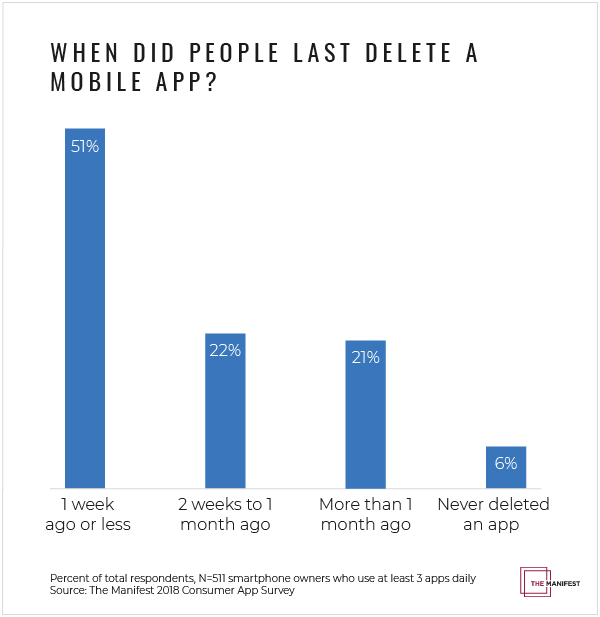
Only 6% of respondents have never deleted an app.
The majority of respondents deleted an app for the obvious reasons – because they had not used it in a long time or it didn’t fulfill their needs. But a full quarter of respondents (25%) deleted an app simply because their phone’s storage space was full and they needed room.
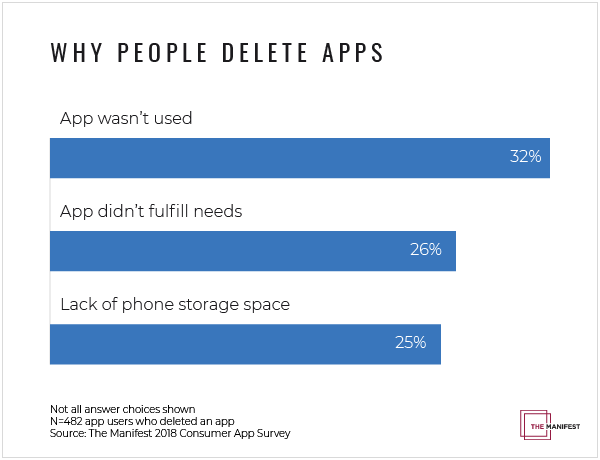
App developers may be making larger apps so users can access them even without an internet connection.
“The reason why apps generally get bigger is because the app developer chooses to save certain digital assets locally on your device. This storage allows the user to have functionality within the app without needing to be connected to the internet,” Levin said.
People expect internet access nearly everywhere now. An app that works without an internet connection is useful for anyone needing to use an app while flying on an airplane, stuck in a subway tunnel, or in other similar situations.
For example, many people who travel abroad may have limited access to data because they do not want to pay international fees.
If they need to use a translation app, having part of the dictionary stored locally on their phone would help them communicate in the local language, even if their phone can’t connect to the internet.
Google Translate’s app gives users the option to download languages to their phone.
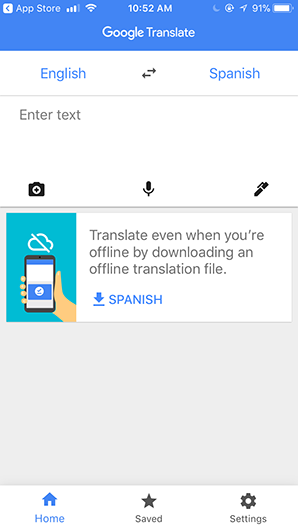
This option can bring peace of mind to travelers and increase the value of the app.
The user must recognize that not everything can be done locally on an app, though. For example, if the user downloads the Spanish dictionary but encounters a French speaker in their travels and wishes to translate using the app, he or she would need to find an internet connection.
Yet, developers must balance the usefulness of locally saved apps with available storage space. You don’t want users to delete your app simply because it is too large. This is a fine line to walk.
“Make sure that everything stored on the device is necessary,” Levin advised. “Keep it really lean – don’t have images or content that don’t need to be there. Make sure these types of assets are either pulled down from the cloud or generated with native code.”
However, the locally stored features on the app shouldn’t be so sparse as to be useless to the user.
“You can't let [pulling content from the cloud] restrict the user from doing a core function within the app, if it isn’t 100% necessary,” Levin said. “If they don’t have WiFi or a perfect connection, the user experience will suffer or cease to exist, and that’s no fun for anyone.”
Although creating a small app is ideal, you must also make sure the app provides value to users – whether or not they have an internet connection.
Understand How Consumers Use Mobile Apps
If a business wants to create a successful app, it must understand users’ common behaviors when it comes to opening, browsing, and deleting apps.
The majority of app users most frequently use social media apps, while communication/messaging apps and gaming apps tie for second.
People likely underreport how often they open an app, given how seamlessly push notifications direct us into dozens of apps every day. Millennials, however, do rely on apps more than older generations and are likely less ashamed of reporting just how frequently they engage with apps.
Finally, over half of smartphone owners deleted an app a week ago or less – and they sometimes delete an app simply because they needed storage space on their phone. A business can work against this behavior by thinking critically about what should be stored locally on the app and what it should pull down from the cloud with an internet connection.
By better understanding how people use apps, a business can create a targeted and meaningful app for its audience.
About the Survey
The survey includes responses from 511 smartphone owners who use at least three different apps daily.
The respondents were primarily female (72%). Age was split among respondents: 18 to 24-years-old (15%), 25 to 34 (28%), 35 to 44 (21%), 45 to 54 (18%), 55 to 64 (12%), and 65 and over (5%).
